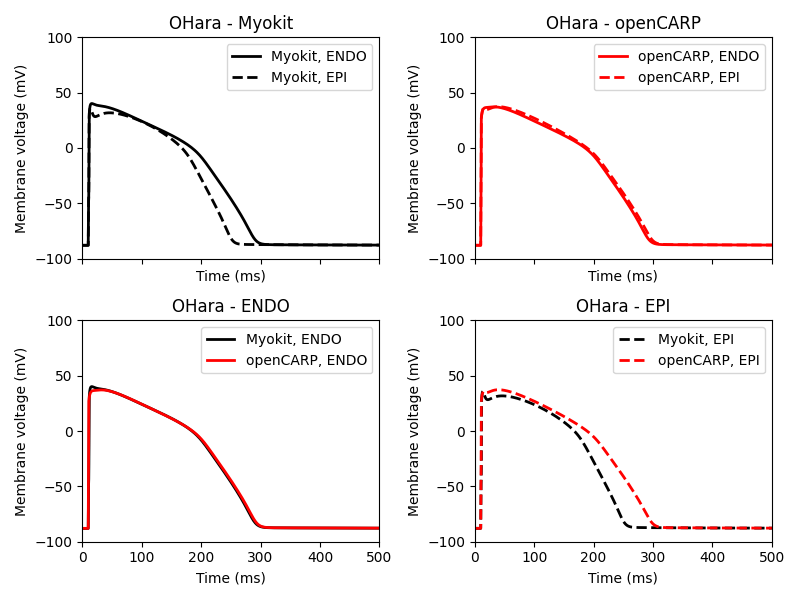Hello,
Running some tests with the O'Hara model provided in openCARP, I noticed that the difference between the endocardial and epicardial version of the model is much smaller than what is described in the original O'Hara paper.
The epicardial action potential (AP) should be shorter than the endocardial AP (Figure 10F in the original paper). However, setting the celltype to 0 (endocardial AP) and 1 (epicardial AP) in the O'Hara model provided in openCARP results in APs that have very similar duration, asillustrated in the attached figure (top right corner).
For comparison, I performed simulations in the Myokit version of the O'Hara model and there the endo-epicardial difference in AP is obvious (top left panel of the figure).
Comparing the endocardial and epicardial simulations in the O'Hara model from openCARP and Myokit (bottom panels), it seems the O'Hara model provided in openCARP does not correctly simulate epicardial AP.
I quickly checked the ion channel conductivities in the openCARP and Myokit versions of the model and they seem to be the same.
Can someone have a look at this?
I ran all the simulations for N=100 beats with BCL = 1000 ms.
